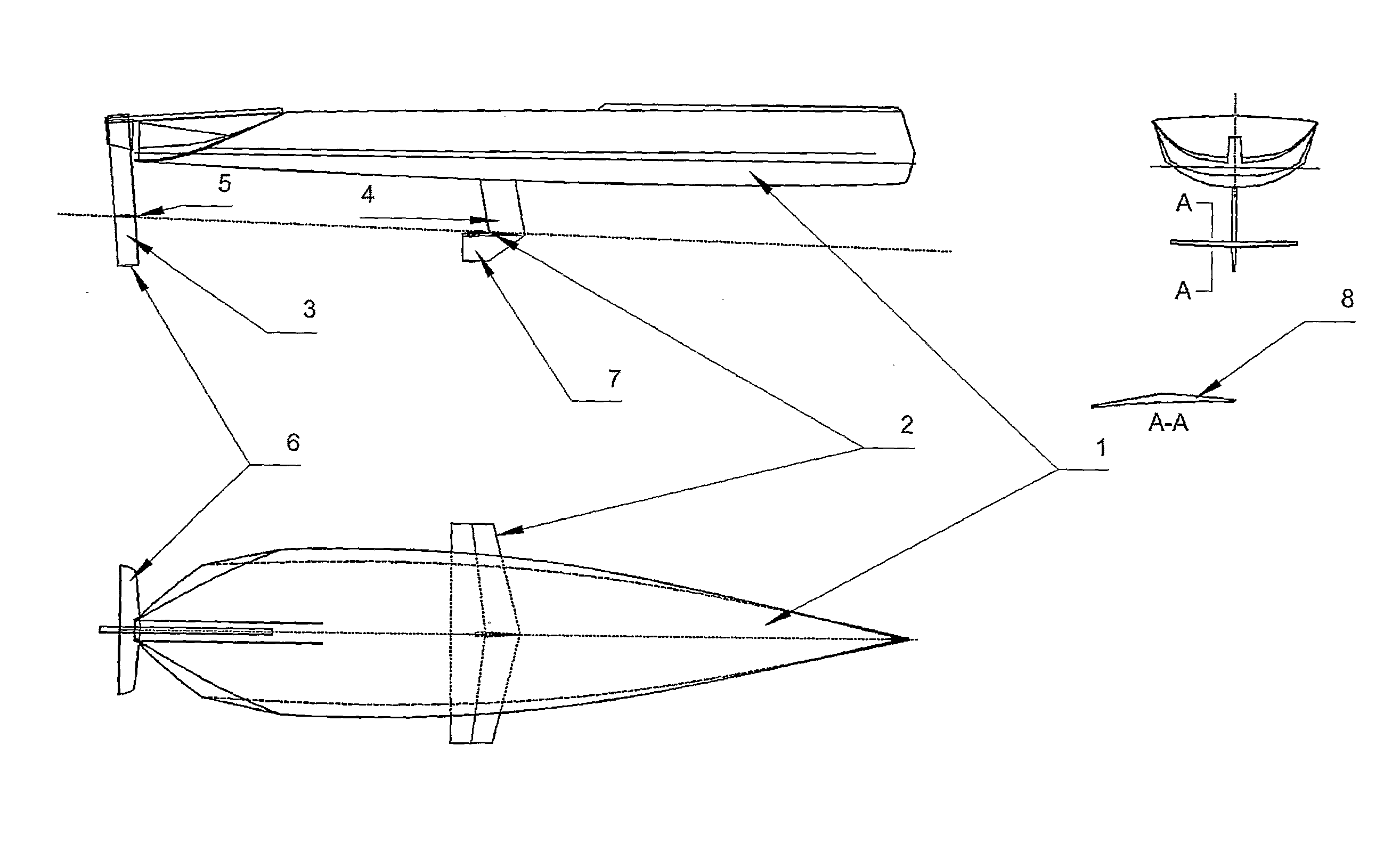Improved Ventilated Hydrofoils for Watercraft
a technology of ventilated hydrofoils and watercraft, which is applied in the direction of marine propulsion, vessel construction, special-purpose vessels, etc., can solve the problems of excessive pressure drag in this case, and achieve the effect of less prone to uncontrollable pitch divergence and high stalling angl
- Summary
- Abstract
- Description
- Claims
- Application Information
AI Technical Summary
Benefits of technology
Problems solved by technology
Method used
Image
Examples
Embodiment Construction
[0053]By reference to FIG. 1 a typical installation of a hydrofoil in accordance with the present invention may be described. From the hull means (1) depends a substantially vertical strut (4) to which, at the foil-borne water surface is attached a substantially horizontal hydrofoil means (2), below this hydrofoil (2) is a further substantially vertical surface (7) which provides lateral resistance when the vessel is foil-borne with the foil (2) at the water surface. A further foil (6) is mounted on the rudder (3) to act as a stabilising surface. This may be of conventional non-ventilating and non-cavitating form and configured to operate fully submerged. To provide a means of keeping the primary foil (2) at the correct incidence a further foil (5) may be attached to the rudder at a height setting coinciding with the foil-borne water surface. This foil (5) may advantageously be of ventilated form to allow consistent surface running operation. The primary foil (2) and the rudder surf...
PUM
 Login to View More
Login to View More Abstract
Description
Claims
Application Information
 Login to View More
Login to View More - R&D
- Intellectual Property
- Life Sciences
- Materials
- Tech Scout
- Unparalleled Data Quality
- Higher Quality Content
- 60% Fewer Hallucinations
Browse by: Latest US Patents, China's latest patents, Technical Efficacy Thesaurus, Application Domain, Technology Topic, Popular Technical Reports.
© 2025 PatSnap. All rights reserved.Legal|Privacy policy|Modern Slavery Act Transparency Statement|Sitemap|About US| Contact US: help@patsnap.com



